'It's soul destroying' - The ongoing plight of coastal farmers as sea eagles feast on new-born lambs
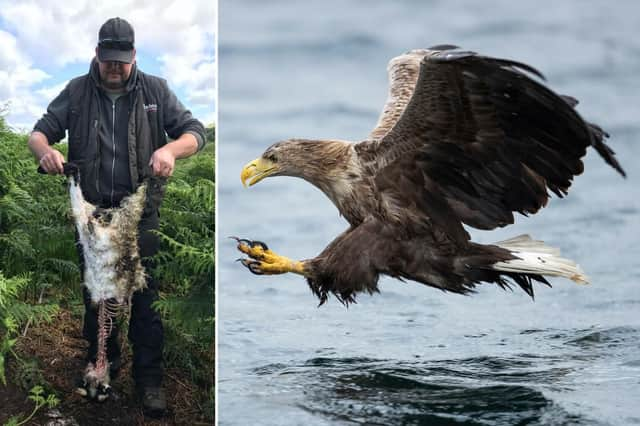

But every spring, the challenge for the careful crofter on the Isle of Lewis is not just the dangers of birth for his flock.
For the sea eagle, with a wingspan reaching up to 8ft and a beak like a meat-cleaver, is on the lookout for food to feed its young.
Advertisement
Hide AdAdvertisement
Hide AdOnce extinct, these enormous birds, the biggest bird of prey in the UK, now thrive in parts of the Highlands and Islands following a successful reintroduction initiative in the 1970s.
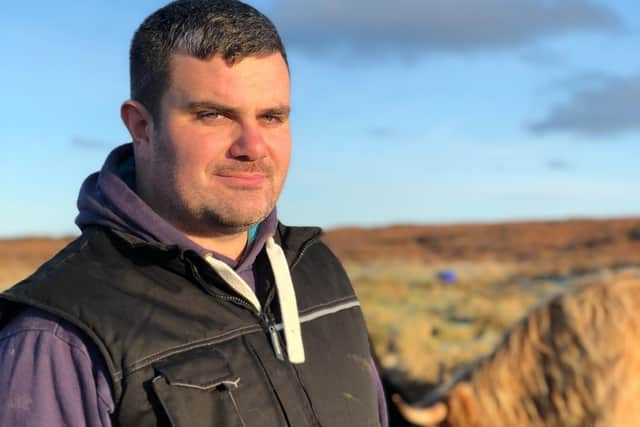

But for Mr Kennedy, 41, the apex predator has become a haunting reminder of the deeply contentious topic of rewilding - a major threat to his livelihood.
Annually he has watched sea eagles feast on his newborn lambs since they came over from Rum where they were reintroduced.
“It’s soul destroying when you deliver twin lambs after sleepless nights watching your flock then see one of them snatched away,” he said.
A Sea Eagle Management Scheme has been set up since the species’ reintroduction to help farmers and crofters deter the birds.
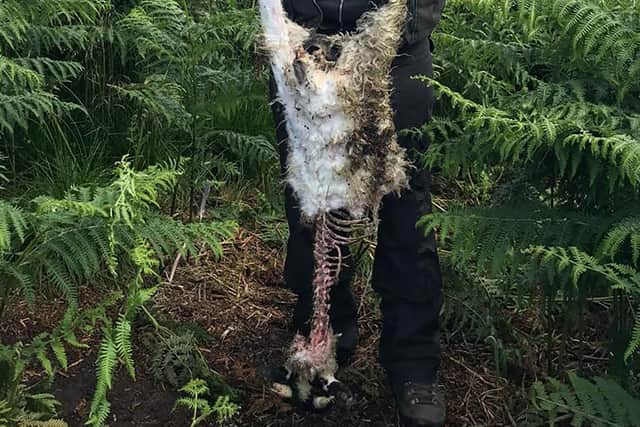

But it involves ‘scaring techniques’ which Mr Kennedy said are futile as the eagles become “more comfortable” at the crofts.
“There isn’t enough food for them, it was inevitable,” he said.
“We had a good deterrent before - the golden eagle – which doesn’t hunt livestock.
Advertisement
Hide AdAdvertisement
Hide Ad“One used to nest nearby and protect the croft from predators, including the sea eagle. But it’s disappeared and I see less of them now because of the sea eagle.”
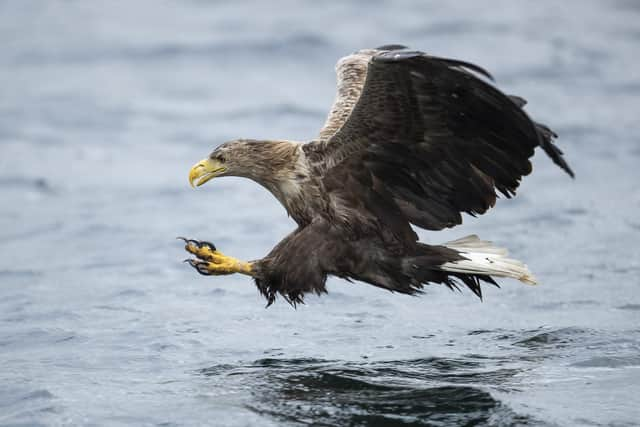

Domnhall Macsween, who works on a community-run estate on Lewis, said lamb predation shows how the Highlands and Islands has become “a playground for townies.”
“I saw a study that claimed 76 per cent of Scots want to see the country rewilded,” he said, “what does that figure mean?
“A lot of those votes are likely coming from uneducated urbanites who have no idea what it’s like living off the land.
“Shows like Countryfile and Chris Packham have romanticised the idea of rewilding for an urban audience.
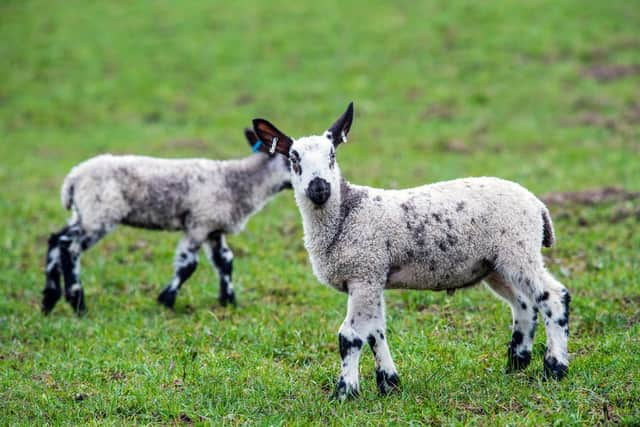

“I get on board with some rewilding initiatives, but some of these groups that have their own agenda ignore what bringing back wolves and big cats will do to communities living in the areas they’re looking at.”
David Colthart, a farmer in Argyll, said he fears the public are unaware of their predicament as limited information is being shared by organisations like the RSPB about the negative impact the birds can have on livestock.
“Lambs are a ready meal for these sea eagles,” said Mr Colthart.
Advertisement
Hide AdAdvertisement
Hide Ad“There are too many birds for the amount of wild food available. We see the aftermath of sea eagles attacks on our lambs and in the monitored areas of our farm we had unaccounted losses of 96 lambs in 2020. That is unsustainable on marginal hill land like ours.”
With some reintroduced species, such as beavers, farmers are allowed to obtain a licence to control them if they cause significant damage.
But the sea eagles, as an apex predator have the highest level of protection.
“Our hands are tied,” said Mr Colthart.
“As a NatureScot sea eagle monitor farmer we have been trialling a lot of different methods to deter the birds but it’s a painfully slow process and nothing is working at the moment to stop the killing.”
A different story
But for Duncan Orr-Ewing, head of species and land management at the RSPB, the story of sea eagles is a different tale.
Among the 130 pairs in Scotland, he said “a small fraction” are having a “minimal” impact on lambs.
“Lambs die for many reasons and the sea eagles should not be treated as the scapegoat,” he said, claiming that they feed mainly on fish and seagulls.
“What’s being said about them attacking livestock is inflammatory and people are basing their opinions on what they perceive to be the case rather than reality.”
Advertisement
Hide AdAdvertisement
Hide AdMr Orr-Ewing said a growing interest in reintroducing species coupled with the current climate crisis shows that “times are changing” and the need to reconfigure managed landscapes such as crofts and farms.
It’s a sentiment echoed by Peter Cairns of Scotland The Big Picture, a charity currently researching the reintroduction of Eurasian lynx among other species.
He said: “My question to the crofters is if we don’t rewild and encourage eco-restoration now, then when?
“Crofters need to adapt to these changes.
“They perceive rewilding as change that they don’t want because it is change imposed upon them by decisions they were excluded from.
“But with this backdrop of a global climate crisis, there is ecological justification to restore an abundance of species.”
He said rewilding is as much about changing mindsets as it is about changing the country’s physical landscape.
“People equate rewilding to de-peopling, like the clearances, but it’s instead about making gradual reintroductions.”
‘No one size fits all’
Mark Nicolson’s Mar estate in the Cairngorms National Park has been viewed by both Mr Orr-Ewing and Mr Cairns as somewhere where both managed and wild stretches of land work together.
Advertisement
Hide AdAdvertisement
Hide AdHe said: "My view is why can’t we have both? Why does it have to be one size fits all in Scotland?
"The debate on rewilding is becoming more and more polarised. It’s very easy to just take one side, but we nee to do the hard part and come to a conclusion together.”
Mr Nicolson’s estate, which stretches over thousands of acres with managed grouse moor, farming and vast swathes of untouched wild land, saw the arrival of two sea eagle chicks last year - a first for Deeside in about 200 years.
Despite having livestock nearby, the proprietor said the birds of prey aren’t known to interfere with lambs because the estate has “plenty of food for them.”
“We have lots of mountain hares on the grouse moor,” he said, “which they love to eat.
“If there isn’t wildlife for them to eat then then they will turn to lambs. This conflict was not unforeseeable.”
Like Mr Kennedy, Mr Nicolson said he has noticed sea eagles impact the golden eagle population on his estate.
"We used to have golden eagles settled here but since the sea eagles arrived I haven’t seen any nesting,” he said.
"I’ve seen some dramatic fights between the two birds.
Advertisement
Hide AdAdvertisement
Hide Ad"It would appear the sea eagles are pushing the golden eagles out.”
Mr Nicolson said large parts of unmanaged land in Scotland lie empty, with little to eat for the sea eagles.
He added: "My agenda on rewilding is how much of Scotland, which is really not that big, has enough food to support the reintroduction of these large apex predators? And if we get rid of farmland, what will we eat?”
A message from the Editor:
Thank you for reading this article. We're more reliant on your support than ever as the shift in consumer habits brought about by Coronavirus impacts our advertisers.
If you haven't already, please consider supporting our trusted, fact-checked journalism by taking out a digital subscription.
Comments
Want to join the conversation? Please or to comment on this article.